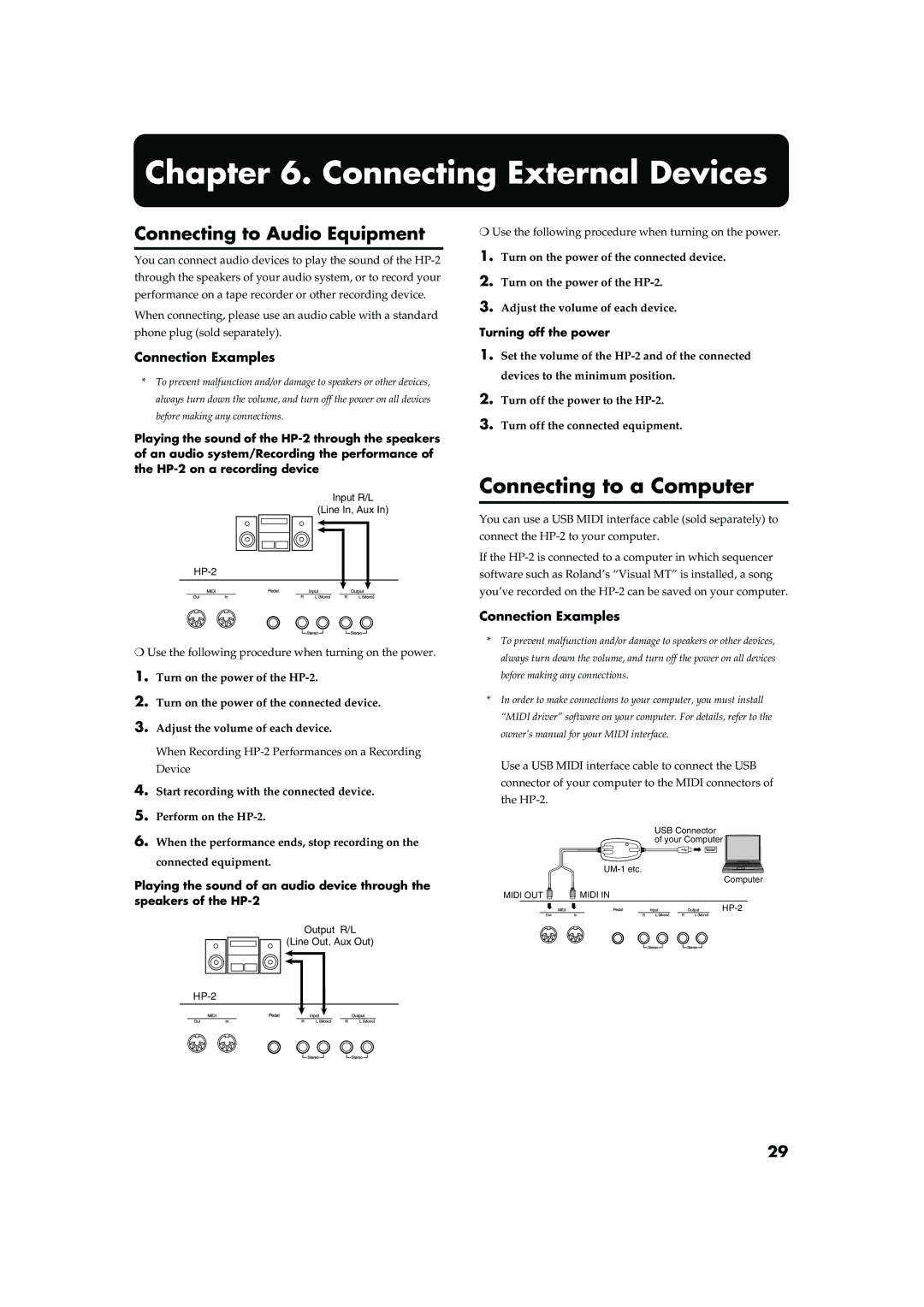
Chapter 6. Connecting External Devices
Connecting to Audio Equipment
You can connect audio devices to play the sound of the
When connecting, please use an audio cable with a standard phone plug (sold separately).
❍Use the following procedure when turning on the power.
1.Turn on the power of the connected device.
2.Turn on the power of the
3.Adjust the volume of each device.
Turning off the power
Connection Examples
*To prevent malfunction and/or damage to speakers or other devices, always turn down the volume, and turn off the power on all devices before making any connections.
Playing the sound of the
fig.audio1.e
Input R/L
(Line In, Aux In)
1.Set the volume of the
2.Turn off the power to the
3.Turn off the connected equipment.
Connecting to a Computer
You can use a USB MIDI interface cable (sold separately) to connect the
If the
❍Use the following procedure when turning on the power.
1.Turn on the power of the
2.Turn on the power of the connected device.
3.Adjust the volume of each device.
When Recording
4.Start recording with the connected device.
5.Perform on the
6.When the performance ends, stop recording on the connected equipment.
Playing the sound of an audio device through the speakers of the
fig.audio2.e
Output R/L
(Line Out, Aux Out)
Connection Examples
*To prevent malfunction and/or damage to speakers or other devices, always turn down the volume, and turn off the power on all devices before making any connections.
*In order to make connections to your computer, you must install “MIDI driver” software on your computer. For details, refer to the owner’s manual for your MIDI interface.
Use a USB MIDI interface cable to connect the USB connector of your computer to the MIDI connectors of
the
fig.comp.e
USB Connector of your Computer
Computer
MIDI OUT | MIDI IN |
29
